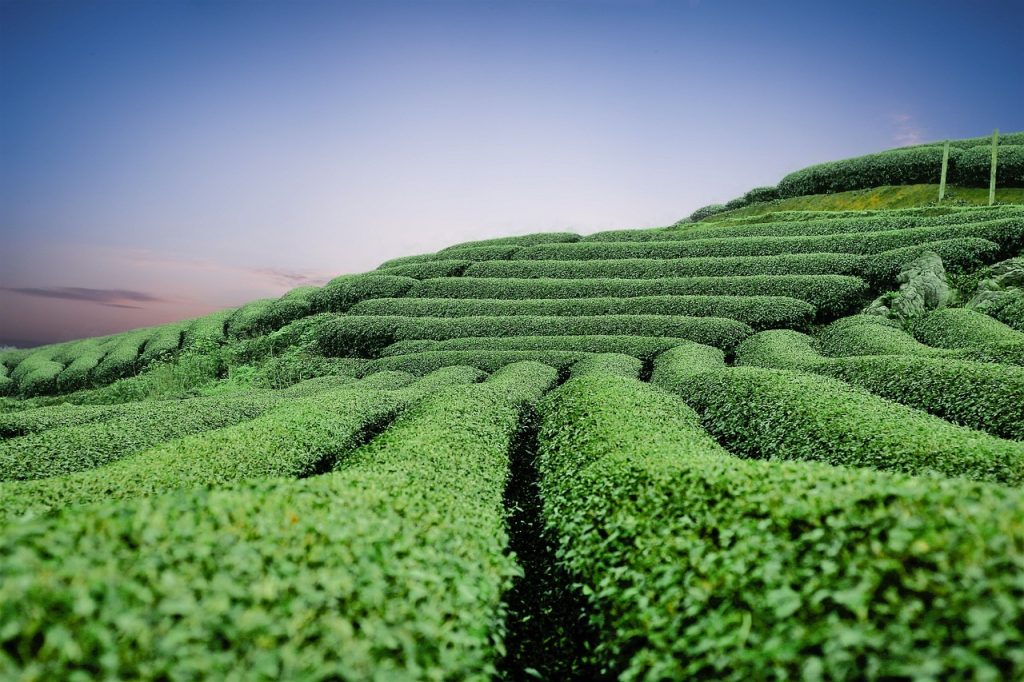Green tea, as a beverage with a long history, has been loved by people since ancient times. Whether it’s China’s Longjing and Biluochun, or Japan’s Sencha and Matcha, green tea attracts tea enthusiasts from around the world with its unique flavor, rich nutritional value, and long-standing cultural background. With modern people’s pursuit of a healthy lifestyle, the charm of green tea is increasing day by day, evolving from a traditional beverage into one that permeates every corner of daily life.
The charm of green tea lies in its refreshing taste and rich nutritional components. The production process of green tea is different from other types of tea, retaining more natural substances such as polyphenols, theanine, and vitamin C. These components not only give green tea its unique aroma and fresh taste but also offer various health benefits to the body, such as antioxidant properties, immune system enhancement, and metabolism promotion. Therefore, green tea is not only a delightful drink but also a healthy choice.
Understanding Green Tea
Types and Characteristics of Green Tea
Green tea is one of the most popular types of tea in the world, with a wide variety of types and characteristics. Here are some famous green teas and their features:
Longjing:
Longjing tea, also known as West Lake Longjing, is produced in the West Lake area of Hangzhou, Zhejiang Province, China. It is renowned for its flat, smooth shape, emerald green color, tender leaves, and unique aroma. When brewed, Longjing tea releases a fresh fragrance, sweet taste, and long-lasting aftertaste. Due to differences in its origin and picking process, Longjing tea is classified into different grades, with Mingqian tea (picked before the Qingming Festival) being the highest quality.
Biluochun:
Biluochun is produced in the Dongting Mountain area of Suzhou, Jiangsu Province, China. It has tightly rolled, spiral-shaped leaves with a silver-green hue and visible tea buds. The tea leaves are tender and green, and the brewed tea has a fresh, lasting aroma with distinct floral and fruity notes, and a fresh, sweet taste. The unique flavor of Biluochun comes from its growing environment and meticulous picking and processing methods.
Maofeng:
Maofeng tea is most famously represented by Huangshan Maofeng, produced in the Huangshan area of Anhui Province, China. Huangshan Maofeng has a delicate, slightly curled appearance with visible tea buds and a greenish-yellow color. When brewed, it produces a clear, bright liquor with a high, persistent aroma and a fresh, mellow taste. Maofeng tea is known for its superior natural environment in high mountain tea gardens and traditional handcrafting methods.
Factors Affecting the Flavor of Green Tea
The flavor of green tea is influenced by several factors beyond its variety. Here are some main influencing factors:
Tea Leaf Quality:
The quality of the tea leaves is a key factor in determining the flavor of green tea. High-quality tea leaves usually come from good varieties, favorable growing conditions, and meticulous picking processes. Quality tea leaves have a neat and attractive appearance, vibrant color, visible tea buds, strong aroma, and a fresh, sweet taste. In contrast, lower-quality tea leaves often have dull colors, faint aromas, and a bitter taste.
Harvest Season:
The season of harvest has a significant impact on the flavor of green tea. Generally, tea leaves harvested in the spring are of the highest quality due to the mild climate, tender green leaves, and rich amino acids and aromatic compounds, which make the tea liquor fresh and fragrant. Mingqian tea (picked before the Qingming Festival) and Yuqian tea (picked before the Guyu Festival) are considered top-grade green teas. Tea leaves harvested in summer and autumn tend to be of lower quality due to the higher temperatures, faster growth, and slightly bitter taste.
Processing Techniques:
The processing techniques for green tea include fixing (shaqing), rolling, and drying. Different processing methods directly affect the tea’s aroma, taste, and color. Fixing is a crucial step in green tea production, primarily using high temperatures to destroy the oxidation enzymes in the tea leaves, preventing the oxidation of polyphenols. Rolling shapes the tea leaves into strips, enhancing the concentration of the tea liquor. The drying process removes moisture from the leaves, making them easier to preserve and transport. The details of each step, such as temperature, time, and pressure, play a significant role in the final quality of the tea.
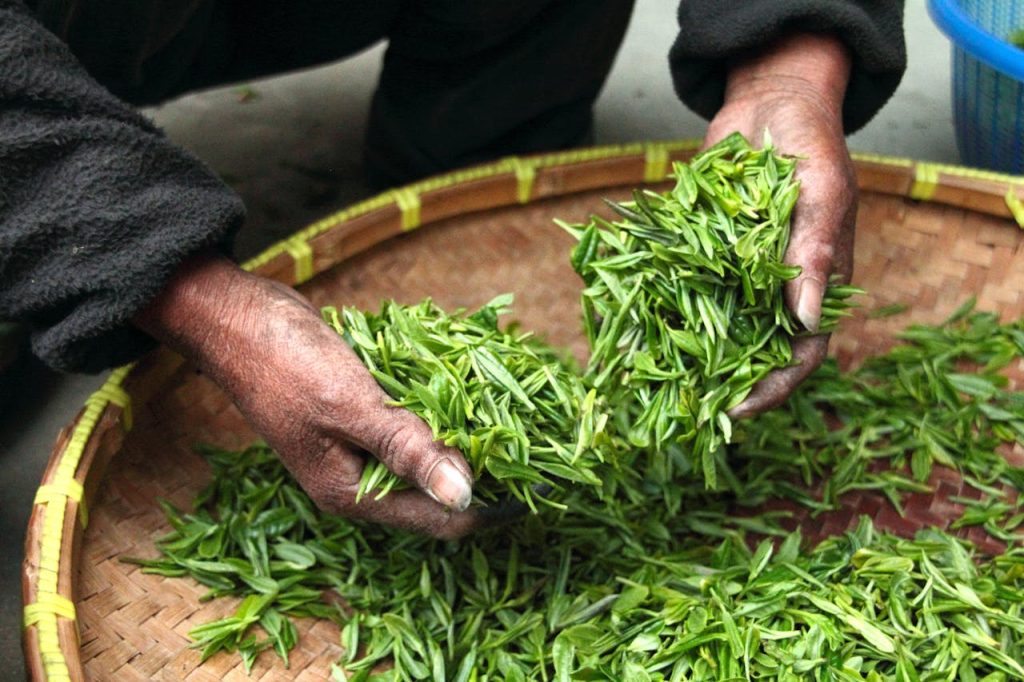
Selecting High-Quality Green Tea
Choosing Purchase Channels
When selecting high-quality green tea, the first step is to choose reliable purchase channels. Reliable tea shops and well-known e-commerce platforms are two major channels for buying premium green tea.
Specialty Tea Shops:
Buying green tea from specialty tea shops is one of the best ways to ensure tea quality. Reputable tea shops usually have strict sourcing channels and quality control, offering a variety of origins, types, and grades of green tea. Additionally, the staff at these shops are often professionally trained and can provide detailed information and purchasing advice. Customers can also taste the tea on-site, allowing them to experience the aroma and flavor firsthand and make a more informed choice.
Well-Known E-Commerce Platforms:
With the development of e-commerce, purchasing green tea through well-known online platforms has also become a convenient option. Merchants on large platforms are often subject to rigorous audits, providing a certain level of credibility. Consumers can assess the quality of tea and the reputation of sellers by checking product reviews, store ratings, and purchase histories. Furthermore, the advanced logistics systems of e-commerce platforms can quickly deliver tea to consumers, meeting the needs of buyers from various regions.
Selection Tips
After choosing a purchase channel, the next step is to select high-quality green tea. Observing the appearance, smelling the aroma, and checking the color can help consumers judge the quality of the tea.
Observing Appearance:
High-quality green tea should have a neat and attractive appearance, with tightly rolled leaves and uniform size. Different types of green tea vary in appearance; for example, Longjing tea is flat, Biluochun is spiral-shaped, and Maofeng tea is delicate and slightly curled. Regardless of the type, the tea should be free of broken leaves and impurities. The color of the tea leaves should be even, without any discoloration or spots.
Smelling the Aroma:
Smelling the aroma is a crucial method for assessing green tea quality. High-quality green tea has a fresh, long-lasting fragrance with natural floral or fruity notes. Although different types of green tea have slightly different aromas, they should not have any off-flavors or stale smells. If the tea has musty, sour, or other unusual odors, it is likely due to improper storage or poor quality.
Checking the Color:
The color of green tea is a direct reflection of its quality. High-quality green tea should have a bright, vibrant color, ranging from emerald green to jade green, with visible tea buds. If the tea leaves are dull, yellowed, or blackened, it may be due to old tea or poor processing techniques. Additionally, the color of the brewed tea is an important quality indicator. High-quality green tea should produce a clear, bright liquor that is pale green or yellow-green in color.
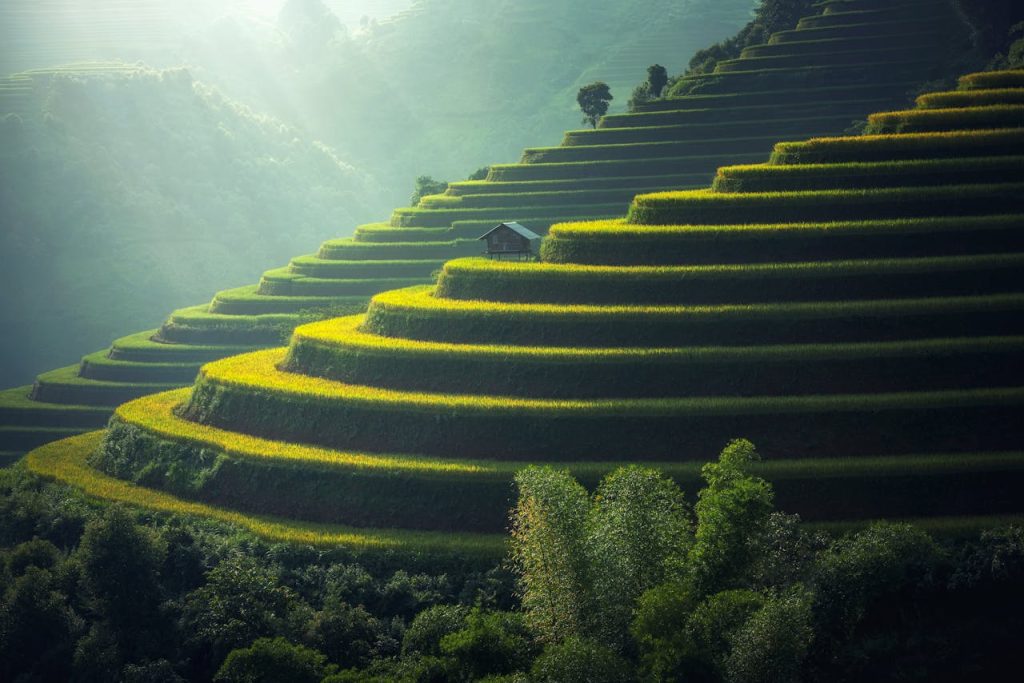
Correct Brewing Method
Green tea is a delightful and healthful beverage, but to fully release its unique flavor and nutritional benefits, mastering the correct brewing method is crucial. This guide will cover the selection of tea utensils, water temperature control, and specific brewing steps to help tea enthusiasts enjoy a perfect cup of green tea.
Selection of Tea Utensils
Glass Cups:
Glass cups are an ideal choice for brewing green tea. The transparency of a glass cup allows you to appreciate the beautiful unfolding process of the tea leaves in the water, enhancing the visual enjoyment of drinking tea. Glass does not absorb tea aromas, which helps retain the original flavor of the green tea. Additionally, glass cups have good thermal conductivity, making it easier to control the water temperature and prevent overheating the tea leaves.
Yixing Teapots:
Yixing teapots, known for their excellent breathability and heat retention, are also a superb choice for brewing green tea. Yixing teapots effectively preserve the tea’s aroma, and over time, the teapot’s walls absorb the tea fragrance, enhancing the tea’s taste. The thick walls of Yixing teapots help maintain a stable water temperature, making them suitable for brewing high-quality green teas.
Water Temperature Control
Optimal Water Temperature for Different Types of Green Tea:
Different types of green tea require different water temperatures. Generally, delicate green teas like Longjing and Biluochun should be brewed with water at 80-85°C; medium-leaf teas like Maofeng should use water at 85-90°C; and coarser, older teas can be brewed with water at 90-95°C. Excessively high water temperatures can damage the vitamins and aromatic compounds in green tea, affecting the taste of the tea liquor.
Tea Leaf to Water Ratio:
The ratio of tea leaves to water is also an important factor in determining the strength of the tea. Typically, 3-5 grams of tea leaves are used for every 150 milliliters of water. Adjust the amount of tea leaves according to your taste preference. For a stronger tea, increase the amount of tea leaves; for a lighter tea, reduce the amount of tea leaves.
Brewing Steps
Warming Infusion:
The warming infusion is the first step in brewing green tea. Begin by rinsing the tea utensils, especially Yixing teapots, with a small amount of hot water to warm them up and enhance the tea’s aroma. Next, place the appropriate amount of tea leaves into the teapot or cup, pour in a small amount of hot water to moisten the leaves, and quickly discard the water. This warming infusion cleans the tea leaves and awakens their aroma, preparing them for the main brewing process.
Main Brewing:
For the main brewing, pour hot water at the appropriate temperature slowly into the tea utensil. Pour water along the side of the cup or teapot to avoid directly hitting the tea leaves, which can damage them. The first infusion typically lasts 1-2 minutes; brewing for too long may result in a bitter tea, while too short a time may not fully release the tea’s aroma.
Brewing Time:
Brewing time varies according to the type of tea and personal taste. The first infusion is usually 1-2 minutes, the second 30 seconds to 1 minute, and each subsequent infusion should be prolonged accordingly. Green tea can usually be brewed 3-5 times, becoming progressively weaker with each infusion. Pay attention to the colour and aroma of the tea liquid and adjust the brewing time as necessary to ensure the best taste of each infusion.
About how long green tea should be steeped for health benefits
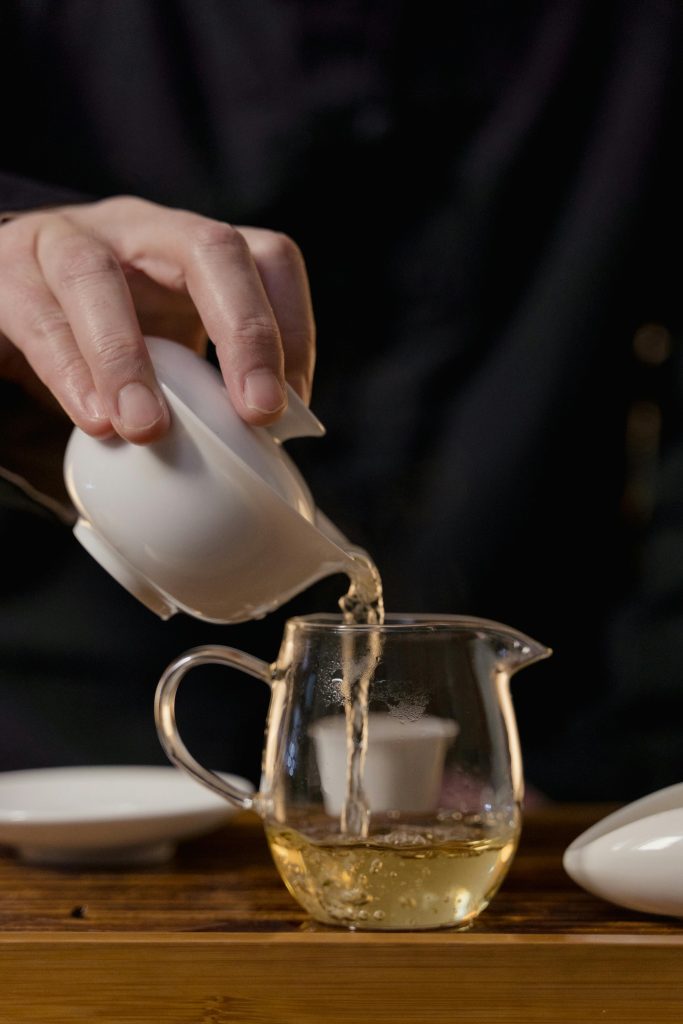
The Importance of Water
Water is one of the core elements in brewing green tea, and its quality directly affects the flavor and quality of the tea. Choosing the right water quality and controlling the hardness or softness of the water are key to making a perfect cup of green tea. This article will explore the choice of water quality and the impact of water hardness on taste.
Choosing Water Quality
Mineral Water:
Mineral water, with its natural variety of minerals, is one of the ideal sources of water for brewing green tea. The moderate levels of calcium and magnesium ions in mineral water can enhance the tea’s flavor, making it richer and more mellow. However, the mineral content should be moderate, as excessively high mineral levels can affect the tea’s aroma and flavor, even masking the tea’s natural taste. Therefore, when selecting mineral water, choose brands with a balanced mineral content.
Purified Water:
Purified water, which has been filtered and treated to remove impurities and harmful substances, retains its pure quality. Using purified water for brewing green tea can preserve the original flavor of the tea, resulting in a fresh and clean tea liquor. For some high-quality delicate green teas, such as Longjing and Biluochun, purified water is a better choice as it does not mask the tea’s natural aroma and freshness.
Impact of Water Hardness on Flavor
Impact of Soft Water:
Soft water, with its low mineral content, better preserves the natural aroma and taste of the tea, resulting in a fresher and smoother tea liquor. Brewing green tea with soft water allows the tea’s aroma to fully release, resulting in a bright-colored and fresh-tasting tea. This is especially true for delicate green teas like Longjing and Biluochun, where soft water can highlight the subtle aromas and flavors, making the tea more enjoyable.
Impact of Hard Water:
Hard water, which contains higher concentrations of calcium and magnesium ions, reacts with the polyphenols in the tea leaves during brewing, forming precipitates that can make the tea liquor cloudy and dull. Tea brewed with hard water tends to have a heavier, more astringent taste with less pronounced aroma, and can also lead to scale buildup on tea utensils, affecting the overall tea-drinking experience. Therefore, hard water is not suitable for brewing green tea, especially high-quality and delicate varieties.
Storing Green Tea
Green tea is cherished for its fresh aroma and rich nutrients. However, proper storage is crucial as green tea is highly sensitive to environmental conditions. Using the right storage methods can help maintain the freshness and flavor of green tea. This article will explore the appropriate environmental conditions and correct storage methods for green tea.
Suitable Environmental Conditions
Temperature:
Temperature is a significant factor affecting green tea quality. Green tea contains rich polyphenols and aromatic compounds that can oxidize at high temperatures, leading to deterioration. Therefore, green tea should be stored in a cool environment, ideally at temperatures between 0-5°C. At home, green tea can be kept in the refrigerator’s fresh-keeping compartment, but it should be kept away from other strongly flavored foods.
Humidity:
Humidity is another crucial factor impacting green tea quality. Green tea has a strong moisture-absorbing capacity, and high humidity can cause the tea to become damp, leading to mold and a decline in quality. The ideal storage humidity should be below 60%. When storing green tea, choose a dry environment and avoid frequently opening the storage container to prevent moisture from entering.
Light Exposure:
The chlorophyll and aromatic compounds in green tea are very sensitive to light, and exposure to light accelerates the decomposition of these compounds, causing the tea to change color and flavor. Therefore, green tea should be stored in a light-proof environment. Use containers made of opaque materials for storing green tea, such as tin cans, ceramic jars, or dark-colored glass bottles.
Correct Storage Methods
Sealed Containers:
Green tea should be stored in well-sealed containers to prevent moisture and odors from the air from affecting the tea, maintaining its dryness and freshness. Common sealed containers include tea canisters, sealed bags, and vacuum-sealed pouches. Tea canisters come in various materials, such as tin, ceramic, and glass. Tin and ceramic canisters are effective in blocking light and are suitable for long-term storage. Sealed bags and vacuum-sealed pouches are suitable for short-term storage or travel.
Avoiding Odors:
Green tea easily absorbs odors from its surroundings, so it should be kept away from items with strong smells. Especially when storing green tea in the refrigerator, place it in a well-sealed container and keep it away from strongly flavored foods like fish, meat, onions, etc. Additionally, ensure that the storage environment is clean and odor-free to preserve the tea’s pure aroma.
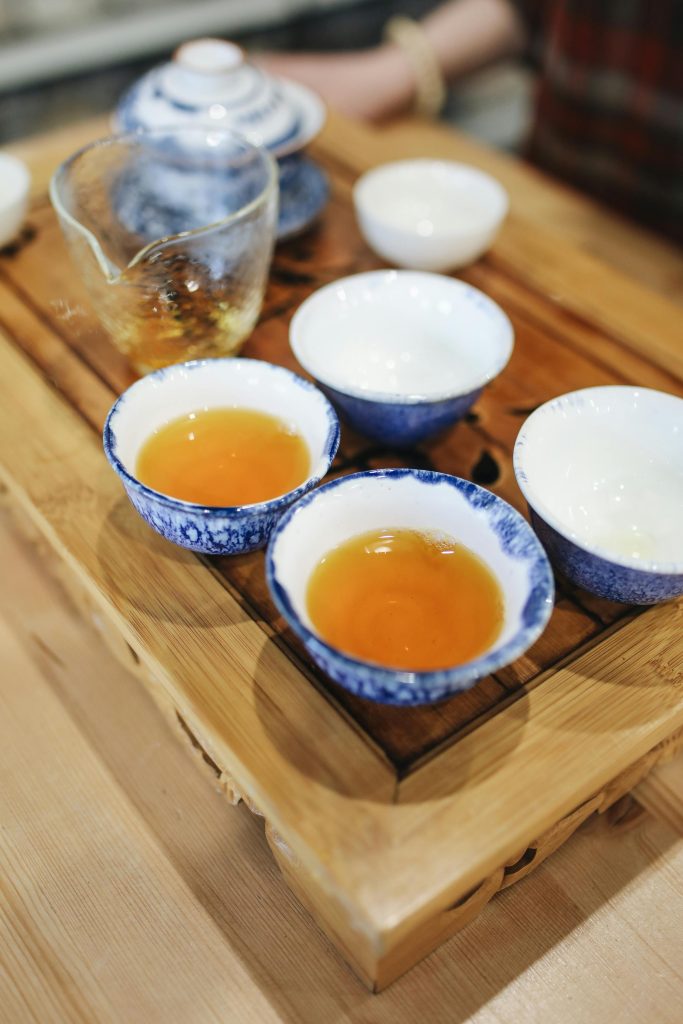
Tea Tasting Techniques
Tea tasting is an art and a pleasure that involves a multi-sensory experience, including visual, olfactory, and gustatory senses. Understanding and mastering tea tasting techniques can enhance your tea appreciation and help you better enjoy the unique flavors of different teas. This article introduces four important tea tasting techniques: observing the color, smelling the aroma, tasting the flavor, and experiencing the aftertaste.
1. Observing the Color
The first step in tea tasting is to observe the color. The color of the tea liquor reflects the tea’s quality and type and is an important indicator of freshness. When observing the tea’s color, consider the following aspects:
- Clarity: High-quality tea liquor should be clear and transparent, free from suspended particles or impurities. The clarity of the tea liquor reflects the purity of the tea and the refinement of its processing.
- Color: Different types of tea have different liquor colors. For example, green tea usually has a bright greenish-yellow or light green color, oolong tea is golden or orange-yellow, and black tea has a reddish-brown color. Observing the color can help identify the tea variety and quality.
- Changes: During the tasting process, the color of the tea liquor may change with each infusion. The first infusion typically has a lighter color, while subsequent infusions deepen. Observing these changes can help gauge the tea’s steeping endurance and quality.
2. Smelling the Aroma
Smelling is one of the most important sensory experiences in tea tasting. The aroma conveys the unique flavor and complexity of the tea. When smelling the tea, pay attention to the following points:
- Type of Aroma: Different teas have distinct aromatic characteristics. Green tea often has a fresh, grassy, or floral aroma, oolong tea has a rich floral or fruity scent, and black tea may present sweet honey or caramel notes. Smelling the tea can provide initial insights into its type and quality.
- Aroma Layers: High-quality teas typically have complex, layered aromas that are rich and long-lasting. When smelling, you might first detect the main aroma and then notice subtle changes. High-quality teas have aromas that are persistent and varied.
- Smelling Techniques: You can smell the tea by bringing your nose close to the tea cup and gently inhaling the aroma. Alternatively, you can smell the dry tea leaves to capture their original fragrance. Different smelling techniques can help better capture the tea’s aromatic characteristics.
3. Tasting the Flavor
Tasting is the core aspect of tea evaluation, where you assess the tea’s flavor and mouthfeel through your palate. When tasting, focus on the following aspects:
- Flavor Complexity: High-quality tea has a complex flavor profile, including initial sweetness, freshness, and richness, followed by subtle bitterness or lingering sweetness. Pay attention to each sip and experience the evolving flavors of the tea.
- Mouthfeel: The mouthfeel of the tea should be smooth and gentle, without noticeable astringency or roughness. Quality tea provides a pleasant, silky sensation in the mouth.
- Concentration: The concentration of the tea liquor depends on the amount of tea leaves and steeping time. A well-balanced tea liquor showcases the tea’s flavors effectively. Adjust the tea-to-water ratio based on personal taste to achieve the ideal concentration.
4. Experiencing the Aftertaste
The aftertaste is one of the most delightful aspects of tea tasting, referring to the lingering sweetness after swallowing the tea. To experience the aftertaste, consider the following points:
- Speed of Aftertaste: High-quality teas typically have a quick and noticeable aftertaste, leaving a lasting sweetness in the mouth after swallowing. The speed of the aftertaste can help assess the tea’s quality and flavor.
- Duration of Aftertaste: The persistence of the aftertaste is another important quality indicator. Premium teas have a lingering aftertaste that remains in the mouth for an extended period, providing satisfaction and pleasure.
- Complexity of Aftertaste: Some high-end teas have a layered aftertaste, with initial sweetness, subsequent sweetness, and lasting sweetness. A nuanced aftertaste reflects the tea’s complex flavor profile and the intricacy of its production.
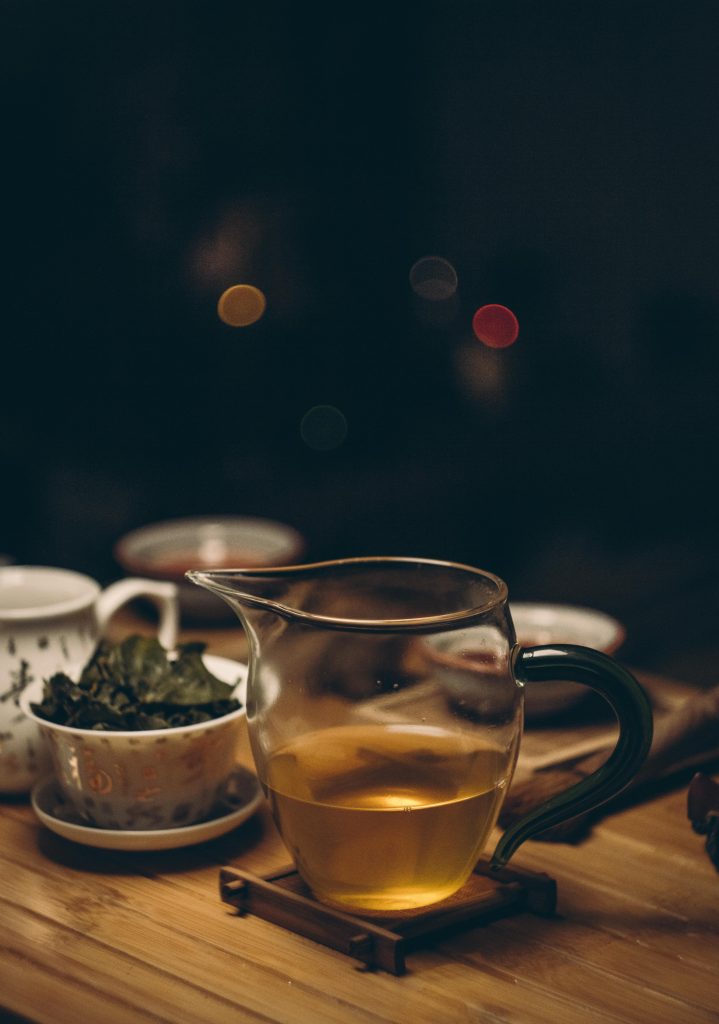
Common Issues and Solutions in Tea Drinking
When drinking green tea, you may occasionally encounter common issues such as excessive bitterness, insufficient aroma, or bland taste. Understanding the reasons for these issues and mastering the corresponding solutions can help you better enjoy the unique flavor of green tea. This article provides detailed solutions to these common problems.
1. Excessive Bitterness
Reasons:
- High Water Temperature: Excessive water temperature can cause the release of bitter compounds (such as polyphenols) in the tea leaves, making the tea liquor taste bitter.
- Over-Steeping Time: Prolonged steeping time can also lead to the excessive extraction of bitter compounds from the tea leaves, affecting the taste.
- Excessive Tea Leaf Amount: Using too many tea leaves can lead to a bitter taste, as the concentration of bitter compounds increases.
Solutions:
- Adjust Water Temperature: Control the appropriate water temperature according to the type and quality of tea leaves. Generally, the water temperature for brewing green tea should be maintained at 80-85°C. For delicate tea leaves, use slightly lower temperatures to avoid excessive release of bitter compounds.
- Control Steeping Time: Adjust the steeping time according to the type of tea leaves. Green tea typically steeps for 1-2 minutes and should not be steeped for too long. If the tea becomes bitter, try reducing the steeping time.
- Adjust Tea Leaf Amount: Reduce the amount of tea leaves to prevent the tea from becoming too strong. It is recommended to use 3-5 grams of tea leaves per 150 milliliters of water and adjust according to personal taste.
2. Insufficient Aroma
Reasons:
- Poor Tea Quality: The quality of tea leaves directly affects its aroma. Low-quality or stale tea leaves may lack aroma.
- Improper Storage: The aroma of tea is easily affected by humidity, odors, and light. Improper storage can lead to the loss of aroma.
- Inappropriate Water Temperature: If the water temperature is too low during brewing, the aromatic compounds in the tea leaves may not be fully released, resulting in insufficient aroma.
Solutions:
- Select High-Quality Tea Leaves: Purchase fresh, high-quality tea leaves to ensure the aroma. Check the packaging date and quality of the tea leaves.
- Properly Store Tea Leaves: Store tea leaves in a dry, dark environment using airtight containers to prevent moisture and odor absorption, thereby preserving the original aroma.
- Adjust Water Temperature: Use appropriate water temperature for brewing. For green tea, it is recommended to use water at 80-85°C to fully release the aroma.
3. Bland Taste
Reasons:
- Low Tea Quality: Low-quality tea leaves may lack rich flavor layers, resulting in a bland taste.
- Insufficient Tea Leaf Amount: Using too little tea leaves can lead to insufficient concentration, making the taste appear bland.
- Water Quality Issues: The quality of water also affects the taste of the tea. Poor water quality can result in a thin taste.
Solutions:
- Select High-Quality Tea Leaves: High-quality tea leaves generally have rich flavor layers and taste. Choose reputable brands or high-quality tea leaves to enhance the flavor of the tea.
- Adjust Tea Leaf Amount: Increasing the amount of tea leaves can enhance the concentration of the tea liquor, making the flavor more robust. Adjust the ratio of tea leaves to water according to personal taste to find the optimal brewing ratio.
- Improve Water Quality: Use high-quality water sources, such as purified water or mineral water, to avoid negative impacts on the tea’s flavor. Ensure that the water is clean and odor-free to preserve the original taste of the tea.
